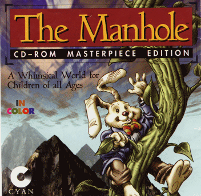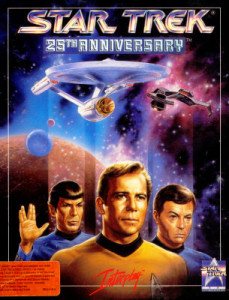
Star Trek: 25th Anniversary is an adventure video game developed and published by Interplay Productions in 1992, based on the Star Trek universe. The game chronicles various missions of James T. Kirk and his crew of the USS Enterprise. Its 1993 sequel, Star Trek: Judgment Rites, continues and concludes this two-game series.
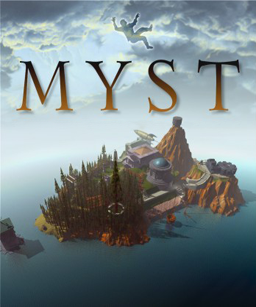
Myst is an adventure video game designed by the Miller brothers, Robyn and Rand. It was developed by Cyan, Inc., published by Broderbund, and initially released in 1993 for the Macintosh. In the game, the player travels via a special book to a mysterious island called Myst. From there, solving puzzles allows the player to travel to other worlds ("Ages"), which reveal the backstory of the game's characters and help the player make the choice of whom to aid. The player interacts with objects and walks to different locations by clicking on pre-rendered imagery.

Cyan, Inc., also known as Cyan Worlds, Inc., is an American video game developer and publisher based in Mead, Washington. Founded as Cyan Productions by brothers Rand and Robyn Miller in 1987, the company created the Myst series.
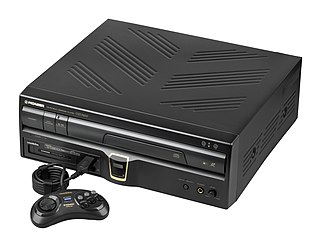
The LaserActive is a converged device and fourth-generation home video game console capable of playing LaserDiscs, Compact Discs, console games, and LD-G karaoke discs. It was released by Pioneer Corporation in 1993. In addition to LaserActive games, separately sold add-on modules accept Mega Drive/Genesis and PC Engine/TurboGrafx-16 ROM cartridges and CD-ROMs.

Rand Miller is a C.E.O. and co-founder of Cyan Worlds. He and his brother Robyn Miller became famous due to the success of their computer game Myst, which remained the all-time best-selling computer game from its release in 1993 until that record was surpassed by The Sims nearly a decade later. Rand also worked on the game's sequel, Riven, and later reprised his role as protagonist Atrus in Myst III: Exile; realMyst; Uru; Myst IV: Revelation; and Myst V: End of Ages. He also co-authored Myst novels The Book of Atrus, The Book of Ti'ana, and The Book of D'ni.

Presto Studios was a computer game development company of the 1990s. The company is notable for its award-winning series The Journeyman Project as well as Myst III: Exile, the 2001 sequel to Cyan's Myst series.
Myst is a franchise centered on a series of adventure video games. The first game in the series, Myst, was released in 1993 by brothers Rand and Robyn Miller and their video game company Cyan, Inc. The first sequel to Myst, Riven, was released in 1997 and was followed by three more direct sequels: Myst III: Exile in 2001, Myst IV: Revelation in 2004, and Myst V: End of Ages in 2005. A spinoff featuring a multiplayer component, Uru: Ages Beyond Myst, was released in 2003 and followed by two expansion packs.
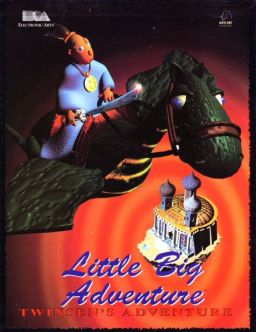
Little Big Adventure is a 1994 action-adventure game developed by Adeline Software International. It was published in Europe by Electronic Arts, and by Activision in North America, Asia and Oceania under the name Relentless: Twinsen's Adventure. Over 500,000 copies were sold by 1999. The game was initially released on CD-ROM and some time later on floppy disks; the CD-ROM version features full-motion video, music and speech whereas the floppy disk version has MIDI music files and still images to replace the videos. The game was later ported to the PC-98 and FM Towns and was released in Japan in 1995. It was released for the PlayStation in Japan and Europe in 1996 and 1997 respectively, and to Android and iOS devices in 2014.

Strike Commander is a combat flight simulation video game designed by Chris Roberts and released by Origin Systems for the PC DOS in 1993. Its 3D graphics-engine used both gouraud shading and texture-mapping on both aircraft-models and terrain, an impressive feat at the time. Significant plot elements were presented through in-game cut-scene animations, a hallmark storytelling vehicle from Chris Robert's previous Wing Commander games. Strike Commander has been called "Privateer on Earth", due to the mercenary role-playing in the game.

Myst V: End of Ages is a 2005 adventure video game, the fifth installment in the Myst series. The game was developed by Cyan Worlds, published by Ubisoft, and released for Macintosh and Windows PC platforms in September 2005. As in previous games in the series, End of Ages's gameplay consists of navigating worlds known as "Ages" via the use of special books and items which act as portals.
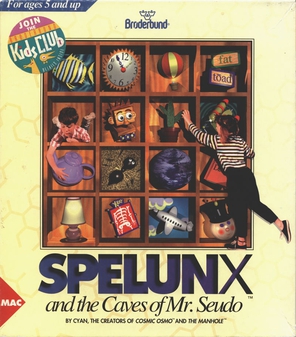
Spelunx and the Caves of Mr. Seudo is an educational computer game intended for young children developed by Cyan in 1991.

Cosmic Osmo and the Worlds Beyond the Mackerel is a graphic adventure computer game for the Macintosh computer line created by Cyan, Inc. It was published in 1989 and won the 1990 Mac User's Editors' Choice Award for the "Best Recreational Program" category.

Dark Sun: Shattered Lands is a turn-based role-playing video game that takes place in the Dungeons & Dragons campaign setting of Dark Sun. It was developed and published by Strategic Simulations in 1993. It received positive reviews although released initially in an unfinished state. The game had a sequel, Dark Sun: Wake of the Ravager, in 1994. An online MMORPG taking place in the same setting, Dark Sun Online: Crimson Sands, was released in 1996 and hosted on the T.E.N. Network.
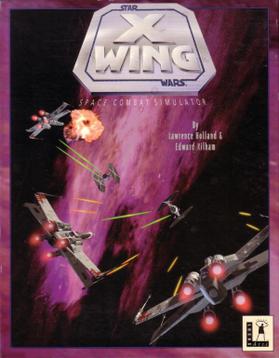
Star Wars: X-Wing is a space simulation video game, the first of the X-Wing combat flight simulation games series. The player's character flies starfighters, including the X-wing, for the Rebel Alliance. The narrative precedes and parallels the events of Star Wars Episode IV: A New Hope.
StrataVision 3D is a comprehensive 3D computer graphics software package developed by Strata. Features include primitives-based modeling with texturising, keyframe animation, raytrace and later radiosity rendering under the name of Raydiosity.
Secret Agent is a side-scrolling platform game developed and published by Apogee Software. The first episode is shareware, while the remaining two are sold directly by the publisher. Secret Agent uses the same game engine as the earlier Crystal Caves.

Dragon Lore: The Legend Begins is a point-and-click adventure game released in 1994 by Cryo Interactive for MS-DOS, and later ported to the 3DO video game console. The game was a commercial success, with sales of 300,000 units by 1997. An emulated version was released for Microsoft Windows and macOS in 2013.

Dark Sun: Wake of the Ravager is a role-playing video game developed and published by Strategic Simulations in 1994 for the MS-DOS operating system. It is the sequel to Dark Sun: Shattered Lands.

Star Wars: TIE Fighter is a 1994 Star Wars space flight simulator and space combat video game, a sequel in the Star Wars: X-Wing series. It places the player in the role of an Imperial starfighter pilot during events that occur between The Empire Strikes Back and Return of the Jedi.

Grandmaster Chess is a 1992 chess video game for DOS and Macintosh developed by IntraCorp and its subsidiary Capstone that was focused on neural network technology and an artificial intelligence (AI) able to learn from mistakes.
